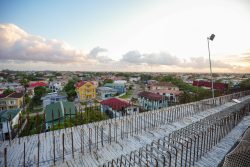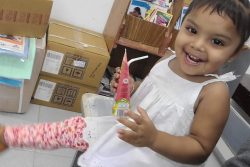Of the approximately 7.9 billion people in the world, an estimated one in every 150 (some 50 million in total) was in a situation of modern slavery on any given day last year. This is according to an International Labour Organisation (ILO) report published last month titled: “Global Estimates of Modern Slavery: Forced Labour and Forced Marriage”. The ILO defines both forced labour and forced marriage as modern slavery since they represent circumstances that individuals are often unable to walk away from “because of threats, violence, deception, abuse of power or other forms of coercion”; in most instances it requires legal or other intervention to emancipate them.
A comparison of global estimates in 2016 and 2021 revealed that forced labour has increased by some three million and forced marriages by seven million over the last five years. While these numbers have no doubt been exacerbated by the profusion of armed conflicts littering the globe, economic strangulation compliments of COVID-19, and the ongoing climate crisis, there is every evidence that high incidence of modern slavery would have existed anyhow. Furthermore, women and children account for more than half of the victims of modern slavery and overall, migrants – particularly those without legal status in the countries they have moved to – and refugees feature prominently among the 50 million.
The ILO has also pointed out that these figures, derived from multiple data sources, could very well be just the tip of the iceberg. The fact is that no one who is forcing other humans to work in horrific conditions or into marriages they do not want stands up and says, ‘here I am, count me’. Rather, it is all done clandestinely, or with as low a profile as possible.
The eighth of the 17 Sustainable Development Goals, adopted in 2015 to be achieved by 2030, aims to “Promote sustained, inclusive and sustainable economic growth, full and productive employment and decent work for all”. Section seven of this goal mandates its signatories (governments, including ours) to “take immediate and effective measures to eradicate forced labour, end modern slavery and human trafficking and secure the prohibition and elimination of the worst forms of child labour…” With the target date a mere eight years away, the world appears to be alternating between standing still and moving in the wrong direction where these issues are concerned.
Tellingly, the report revealed that some 86 percent of forced labour exists in the private sector and this includes commercial sexual exploitation. State-imposed forced labour, such as that which is prevalent in places like Turkmenistan, and in China’s Xinjiang Uyghur region, makes up the other 14 percent. However, this category also expands to include the exploitation of prisoners, including juveniles, who would work on farms or road projects, for example, without pay, or for less than the minimum wage.
Many governments, ours included, tend to focus solely on the classification of forced labour that involves trafficking in persons (TIP), leaning more to investigating the commercial sexual exploitation of foreigners. This is possibly because of the ramifications of losing its status in the US State Department TIP ranking as delineated in its annual report.
This year, Guyana remained at Tier 1, which means it met the minimum standards for compliance with regard to eliminating severe forms of TIP. The 2022 State Department report found that the government identified 216 trafficking victims, but missed 15 who were rescued by non-governmental organisations. The local breakdown matches the international figures in that of the 231 victims, 193 women and 14 girls were being exploited in sex trafficking, while the remainder were involved in forced labour. The total included ten men and three boys. By nationality, the victims were overwhelmingly Venezuelan (176); seven were Jamaicans and there were five Cubans, two Brazilians, and two Indians along with 28 Guyanese. The other 11 were from unspecified countries. Unfortunately, although there were so many victims, no traffickers were convicted.
This government’s seeming preoccupation with commercial sexual exploitation notwithstanding, the global numbers indicate that the majority of forced labour can be found in the manufacturing, construction, and agriculture sectors and in domestic work. The other areas where it is exists, but on a smaller scale include mining, quarrying, fishing and illicit activities.
Given the data noted above, Guyana and all governments must look within if they are to effectively tackle modern slavery. That being said, the next emancipation is unlikely to result from mere government intervention. Indeed, it would require a holistic approach involving the private sector, civil society, the media, NGOs and individuals.





